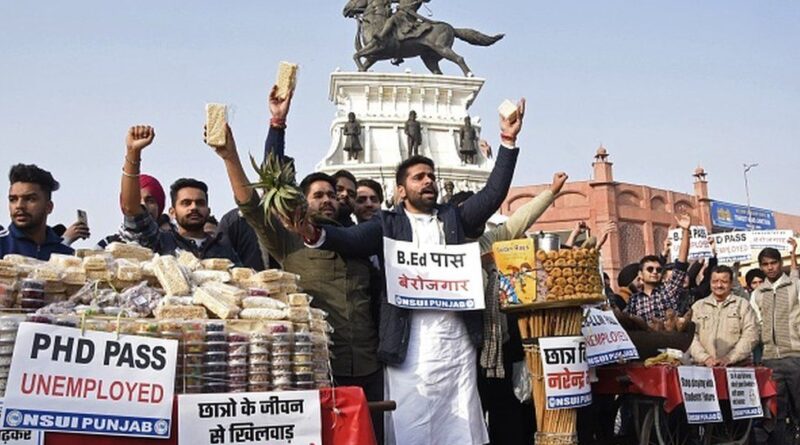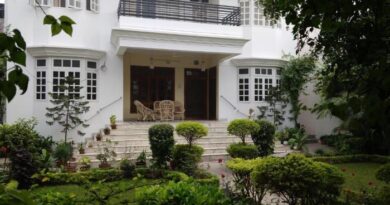Thoughts on India’s Republic Day!
Subscribe, Share, Like, Tweet…be the Voice Of Independent Press
By Nazarul Islam, Copy Edited By Adam Rizvi, TIO: We are frequently reminded that India is the emerging global power. That, India is a powerful country….the strong nation, located in a bad neighborhood. We need to ask ourselves….What makes a nation strong? Is it one, where a few people move from strength to strength, or is it one where the vast majority have access to education, healthcare, work, opportunities, and a social ethos that allow them to live a life of dignity and fulfill their potential? Conversely, we need to ask: what makes a nation ‘weak’?
Also Read: Trigs on Track- Diplomacy Unwound – Wintering the Beijing Olympics
Can we see strength as happy citizens, social cohesiveness, freedom to speak out, resilience, and cultural influence?
A journalist friend who recently visited India’s historical city has this to share: Here is a view from the pavement. On a bitterly cold Delhi afternoon last week, I stopped for a chat with Shiv, a cobbler I have known for some time. We talked about this and that, and as always, we landed up exchanging a word or two about his life. Life had become harder than usual for Shiv —he lost his son last year, did not have much work, went back to his village, was in debt, and customers are few and far between.
Also Read: Redefining Hindu identity in America
“Who wants to get bags and shoes repaired when they are going out much less?” he wryly said. I asked him about his thoughts for the future. Did he feel the country was becoming stronger? Shiv did not immediately reply. After a slight pause, he broke into a familiar, toothy grin. “I am not educated. I dropped out of school. What is a country but its people? Do I look strong to you?”
Shiv is one among the millions of what academics call the ‘urban poor. A recent survey by People’s Research on India’s Consumer Economy (PRICE), a Mumbai-based think-tank, between April and October 2021, has this to say – the annual income of the poorest 20 percent of Indian households had been rising since 1995 but plunged 53 percent in the pandemic year 2020-21 from their levels in 2015-16.
Also Read: Hijab: My Life, My Right, My Choice, “World Hijab Day”.
In the same five-year period, the richest 20 percent saw their annual household income grow 39 percent. The survey covered 200,000 households in the first round and 42,000 households in the second. It was spread over 120 towns and 800 villages across 100 districts. Even among the poorest 20 percent, those in cities have been hit harder than their rural counterparts.
There is another data that points to growing inequality and the précarisation of those at the bottom. A recent report by Oxfam India flags important points about India’s inequality crisis – the number of Indian billionaires grew from 102 in 2020 to 142 in 2021, the worst year yet for India during the pandemic, the report notes.
Also Read: Indian Muslims ‘less religious’ – Lowered in comparison upto 2016
This was also the year when the share in the national wealth of the bottom 50 percent of the population was a mere 6 percent. The Oxfam report also refers to the FAO report on The State of Food Security and Nutrition in the World. That report says there are over 200 million undernourished people in India. There are other disturbing insights in the Oxfam report – the life expectancy of a Dalit woman is approximately 15 years less than that of an upper-caste woman.
Additionally, research suggests that relative to upper-caste Hindus, Adivasi life expectancy is more than four years lower, Muslim life expectancy is about one year lower, and Dalit life expectancy is more than three years lower; economic status explains less than half of these gaps.
Also Read: Mumbai Police: Not Just Bulli Bai but Multiple Handles Used to Divide Sikhs-Muslims
Arguably, India is not the only country where the poor have been bludgeoned by the pandemic, nor is India the only country with glaring inequalities. But at a time when the poor, like my journalist friend’s neighborhood cobbler, find themselves in an increasingly vulnerable position for no fault of theirs, what message are we giving out when we say talking about rights paves the way to a weak nation?
Strength is not an abstract term. The strength of a country is based on the strength of its people. The Constitution of India guarantees certain fundamental rights. When these rights are violated, an Indian citizen can go to court, at least in theory. In reality, there is a huge backlog of cases, a lack of awareness about legal rights, and millions of Indians are denied their fundamental rights.
Also Read: Hate Speech: Waseem Rizvi alias Jitendra Narayan Tyagi Arrested In India
Shiv, like every other Indian, or neighboring Bangladeshi or a Pakistani or a Nepali or Sri Lanka. has a right to live with basic dignity. He also has a right to speak out.
An Indian citizen has the right and the duty to point out when he sees the violation of rights of people who are less privileged, increasing fragility and deepening inequalities around him. Only by doing so – by talking about people’s fundamental rights enshrined in the Constitution and other rights like healthcare, education, nutrition, and decent work – can a citizen lead a life of dignity.
Fellow Indians like to boast of their strong economy, however, their leaders need to understand why a poverty-ridden, war-torn, breadbasket nation Bangladesh managed to climb up, under their noses to curb its population growth then rise up the ladder of economy, beating their benefactor India.
Also Read:Pakistan Envoy Surprises All by Attending India’s Republic Day Celebrations at United Nations
Neighboring Pakistan, another broken country struggling to breathe has succeeded in forcing India to main distance by way of developing nuclear deterrent capacity. And, lies their strength.
It must be understood today that you will have a strong country only when your citizens lead lives of dignity when they can hold their heads high. By muting discussion about the rights of citizens shall only weaken the unity of the Republic of India.
Also Read, more from this author: Strange bedfellows….




